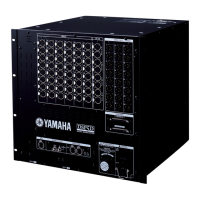PM5D / PM5D-RH Quick Start Guide Part 3
3
Table of Contents
The PM5D/PM5D-RH Quick Start Guide is in three parts 2
Table of Contents 3
Background and introduction to Studio Manager. 4
What is Studio Manager for? 5
Where can I get Studio Manager? 5
What kind of computer do I need? 6
Which version of software should I use? 7
How can I deal with older versions? 7
If I don’t have access to a PM5D can I still get started and use the software? 7
Opening Studio Manager and the Editor for the fi rst time. 8
Using Editor Windows. 8
Changing parameters. 9
Dragging a rotary knob. 10
The SEL channel windows; main and Additional. 10
Channel copy and paste. 10
Keyboard Shortcuts. 11
PM5D setup; a walk through guide. 12
PM5D rider specifi cations; 12
Entering names and doing the patch; the planning stage. 13
Entering names and doing the patch; 14
To pair mono input channels as stereo; 15
Output patching. 15
To pair output mixes as stereo. 16
Setting the mix levels. 16
Store your scene and save your setup work. 17
Internal effects engines 18
The Matrix 20
Graphic equalizers, GEQ. 20
User Defi ned Keys 21
Assignable/DCA faders 21
Cue level on faders for monitor engineers. 22
Store and Save again 22
PM5D data loading from PCMCIA card. (Basic Load All data) 23
Going on-line for the fi rst time; Studio Manager, PM5DV2 Editor and PM5D 24
PM5D mixer settings 24
Setting up MIDI ports the fi rst time you go on-line. 25
On-line, Off-line and Synchronized. 26
Loading and saving sessions without a PCMCIA card; Use Studio Manager. 26
Advanced Load and Save using On-line connection. 27
What makes up a Console or Session File? 27
Library Window dragging. Example; load a stored user effect from one session to another. 28
Using two PM5DV2 Editors. 29
Making and breaking scene links in PM5DV2 Editor 30
To merge two bands scenes into one session fi le; 30
Wireless remote control of PM5D. 31
PM5D/PM5D-RH Quick Start Guide in three parts. 31

